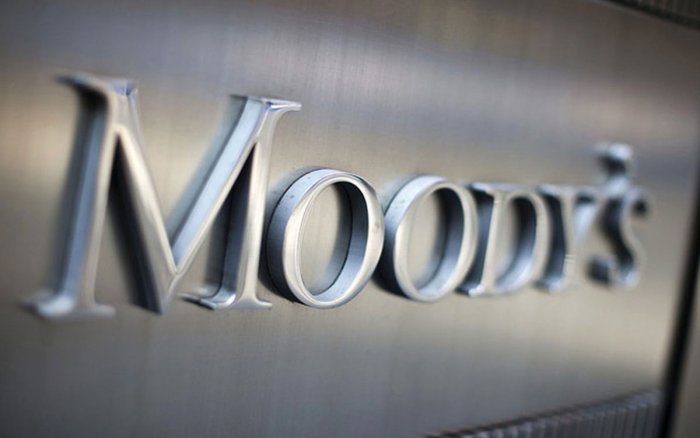No Upgrade for Hungary This Year

In spite of heated expectations, the last credit rating review of the year did not bring an upgrade for Hungary. Moody’s Investors Service, however, does foresee the robust economic growth continuing into 2020. Government and analysts were left disappointed, although one reason for the decision was the fact that the country’s state debt ratio is still high.
Moody’s Investors Service affirmed the government of Hungary’s long-term issuer and senior unsecured debt ratings at “Baa3” on November 23, at its second scheduled review of this year. The ratings outlook remains “stable”.
The decision leaves Hungary just over the investment grade threshold for this year; Moody’s’ was the last review scheduled for 2018.
Moody’s says in its accompanying justification that the robust growth of the Hungarian economy will continue into 2020, but added that the economy faced a number of short- and medium-term challenges.
The agency says Hungarian authorities remain committed to gradual fiscal consolidation, but emphasizes that the debt burden stays at elevated levels. The agency also mentions the overall supportive institutional capacity, but adds that some gaps constrain policy credibility.
Moody’s forecasts real GDP growth of 4.3% in 2018 and 3.4% in 2019.
“Annual real GDP growth rates have been accelerating since 2016, as the economy has been responding to government policies aimed at revitalizing domestic demand,” it reads. It adds that for the first three quarters of 2018, annual growth rates averaged 4.7%, mainly driven by strong domestic demand, chiefly from private consumption and investment.
Positive FDI
The report mentions the recently announced large-scale FDI, mainly in the automotive sector, as having a continuing positive impact over the coming years, not only during the construction phase but also later, when export capacities come on stream.
But Moody’s also highlights that the very tight labor market, with already low unemployment and high employment rates, will pose a growing constraint for continued strong growth.
Slowing global growth, particularly in key markets such as Germany, will reduce the external growth contribution, and given Hungary’s reliance on the automotive industry, this exposes it to growing protectionist tendencies.
As for the growth outlook beyond 2020, Moody’s expects that the anticipated reduction in the size of future EU funds for Hungary will have a negative effect on the long-term growth outlook.
In Moody’s view, the Hungarian authorities’ continued commitment to maintaining general government fiscal deficits below 3% of GDP is a credit strength. It adds, however, that despite a sustained decline, Hungary’s debt burden will remain significantly above the Baa-rated median, which will stand at around 50% of GDP in 2018 and 2019.
In addition, Moody’s notes that Hungary faces a sizeable structural fiscal deficit, which underscores the pro-cyclical nature of fiscal policy. According to the EC’s Autumn forecast, Hungary’s structural deficit will deteriorate further in 2018 to around 3.8% of potential GDP, from an estimated deficit of around 3.4% in 2017. The EC forecasts a gradual improvement from 2019 onwards, and expects the structural deficit to narrow to 3% of potential GDP by 2020.
Unorthodox Policy
The unorthodox policies that the government has introduced also got its share of attention in the statement.
“Institutional strength in Hungary remains constrained by the unorthodox policy environment, a history of unpredictable regulatory changes and concerns over transparency, as well as the difficult relationship with the EU, which have the potential to negatively affect investor perception and the business environment,” the credit agency says.
Moody’s recognizes, however, that so far FDI has not been negatively affected and it also acknowledges recent government actions, such as the establishment of a National Competitiveness Council and the creation of the Ministry of Innovation and Technology. Together with the government’s commitment to adhere to the fiscal deficit rule of 3% of GDP under the Stability and Growth Pact, these support Hungary’s institutional capacity and effectiveness.
Moody’s decision surprised local analysts, who had expected an upgrade, or at least a positive change in the currently “stable” outlook.
TakarékBank chief analyst Gergely Suppan said failing to upgrade Hungary shows how far behind ratings agencies are with regard to what is going on in the economy as well as the market’s assessment.
Raiffeisen Bank senior analyst Zoltán Török said he had expected Moody’s to change the outlook on the rating to “positive”, considering the reduction in Hungary’s financial vulnerability, its current account surpluses, and its low general government deficit. State debt, relative to GDP, is on the decline, with an ever-greater part being financed by households and local banks, while economic growth is strong and the favorable trends are expected to continue, Török added.
SUPPORT THE BUDAPEST BUSINESS JOURNAL
Producing journalism that is worthy of the name is a costly business. For 27 years, the publishers, editors and reporters of the Budapest Business Journal have striven to bring you business news that works, information that you can trust, that is factual, accurate and presented without fear or favor.
Newspaper organizations across the globe have struggled to find a business model that allows them to continue to excel, without compromising their ability to perform. Most recently, some have experimented with the idea of involving their most important stakeholders, their readers.
We would like to offer that same opportunity to our readers. We would like to invite you to help us deliver the quality business journalism you require. Hit our Support the BBJ button and you can choose the how much and how often you send us your contributions.









